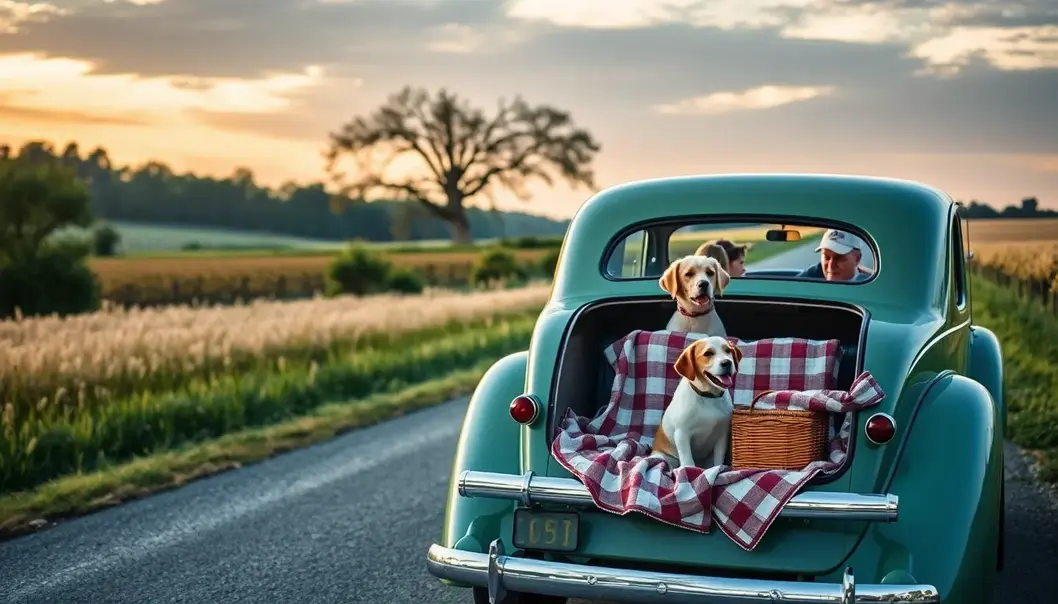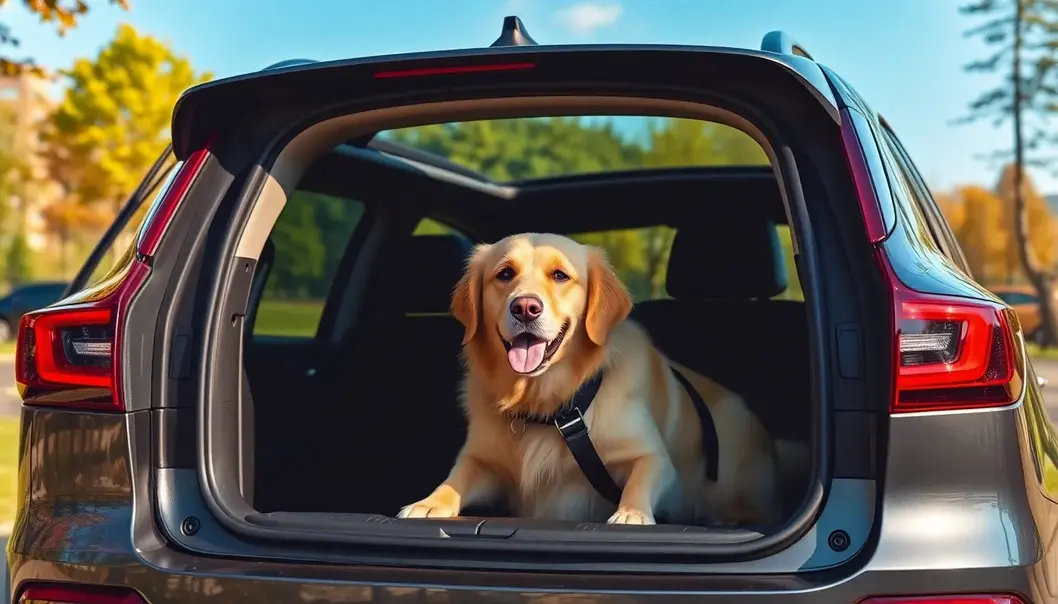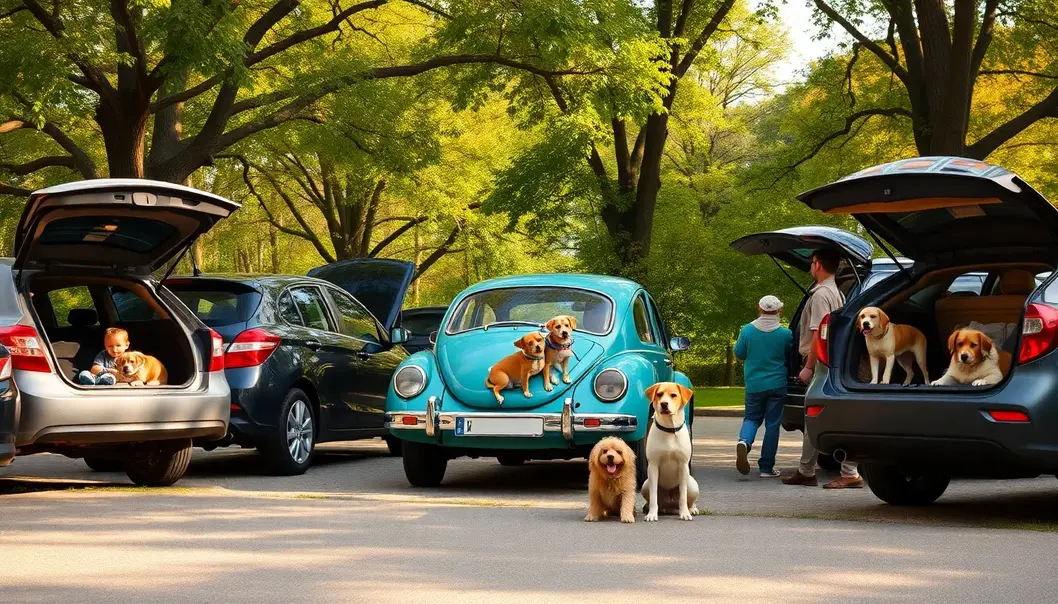Car design has gracefully swept through the tapestry of time, bearing with it changes that echo our lifestyles and evolving needs. From the early days when dogs playfully raced alongside horse-drawn carriages to today’s advanced, pet-friendly vehicles, the transformation is truly heartwarming. Explore how the evolution of automobile design has increasingly taken into consideration our loyal pets, crafting a travel experience that balances comfort, safety, and companionship. This journey through the decades not only reflects technological innovation but also our deepening bond with our animal companions, ensuring that every road taken is shared joyfully together.
The Era of Classic Cars: A Beginning

The 1920s to 1940s marked a golden age in automotive history, when the allure and novelty of personal transport began to sweep across the globe. In those years, cars were crafted with an elegance and simplicity that reflected the technological and societal progress of the era. However, the notion of accommodating pets in vehicle design was nearly non-existent. Despite this oversight, families did not hesitate to embark on journeys with their furry companions, finding ways to adapt to the one-size-fits-all interiors of the classic automobiles.
During this period, cars were primarily designed for function and style. The vehicles of the 1920s, such as the open-top roadsters, exuded charm and were often adorned with luxurious upholstery, wood trims, and intricate detailing. Though aesthetically pleasing, these designs provided little thought for traveling with pets. The open tops, while exhilarating, exposed both passengers and pets to the elements. Families who brought their four-legged companions along often made use of blankets or makeshift barriers to create a sense of security for their pets.
As the 1930s rolled in, the automotive industry saw innovations in car design, which began to put a greater emphasis on safety and comfort. Steel bodies became more common, replacing the wood frames of earlier years, thus providing a more stable and resilient structure. The introduction of the closed sedan offered some respite from weather challenges encountered in earlier models. For pet owners, this was a small leap toward a more comfortable journey, albeit without specific accommodations like seat belts or air conditioning.
The interiors of cars during these decades were largely comprised of bench seats, allowing pets to roam a bit more freely in the back. Families ingeniously adapted to their vehicles’ constraints, crafting custom setups with pillows and cushions to keep their pets cozy during long drives. Nevertheless, safety was still a significant concern, as there was no standardized method for restraining pets, and the lack of restrictions meant increased potential for distractions.
Despite the challenges, the era’s car culture embraced adventures on the road, and pets became an integral part of family excursions. The allure of weekend trips and the open road was irresistible, and with a little creativity, people found ways to integrate their pets into their motoring lifestyles.
Harking back to these simpler times provides a vivid reminder of how far we have come in car design for our pet companions, as can be seen in modern innovations detailed in the following chapters.
Modern Innovations: Designing for Companions

Car design has undergone a significant transformation over the past few decades, reflecting a shift in our relationship with pets. From the 1970s onwards, manufacturers began to cater explicitly to the needs of pet owners, marking a departure from early automotive designs where pets were merely an afterthought. This evolution in car design highlights broader changes in societal attitudes towards animal welfare.
In the 1970s and 1980s, the growing middle class began to include pets more frequently in their leisure activities, leading to the initial inclusion of basic accommodations for animals in cars. However, true innovation began in the 1990s, when climate control systems became more sophisticated. Dual-zone climate control, initially intended for human passengers, inadvertently benefited pets by allowing adjustments that could ensure a comfortable environment in the rear seats, where pets often travel. This was the starting point for more precise engineering aimed at creature comfort beyond human needs.
As we entered the 21st century, technological advancements, coupled with increased consumer advocacy, spurred manufacturers to incorporate dedicated pet safety and comfort features. Rear compartments have been redesigned with durable, easy-to-clean materials that resist pet hair and stains, recognizing the practical needs of traveling with furry companions. Modern vehicles often include built-in barriers to separate pets from delicate cargo areas, preventing accidents and ensuring safety during sudden stops.
Another major development is the introduction of pet-specific safety equipment, such as harness attachments that secure animals during transit. This reflects a broader understanding of pet welfare and safety. Much like child safety seats, these innovations serve dual purposes: protecting the animal and preventing distraction to the driver.
Designers now incorporate pet-friendly storage solutions, anticipating the needs of pet owners to store toys, leashes, and even portable food and water dishes within reach but out of the way. Furthermore, advances in technology have enabled the integration of built-in monitoring systems that let drivers keep an eye on their pets through rear-seat cameras and sensors, ensuring peace of mind.
These innovations echo the changing perceptions of pets from mere animals to integral family members. Vehicles are not just about human demands but accommodate every member of the family, regardless of species. The direction of automotive design today ensures that pets are considered not as cargo, but as companions worthy of the same comfort and care as human passengers.
While safety and comfort are paramount, the design evolution also speaks to our cultural values. This ongoing commitment to pet-friendly vehicles demonstrates a collective understanding and appreciation of animals’ roles in our lives. As we continue to innovate, the possibilities for even more integrative and seamless travel experiences with our pets will undoubtedly expand.
Considering the safety and comfort of pets is not just an optional extra but has become an expectation with serious implications on buying decisions. To better prepare for travels with your companions, consider exploring tips on safe pet travel by understanding broader principles found here. Together, these innovations not only prioritize our pets’ wellbeing but also enhance our shared journeys.
Final words
The evolution of car design reflects our growing commitment to our pets’ well-being and happiness. From the early days of minimal accommodations to today’s thoughtful, pet-centric features, automotive innovations continue to enhance our journeys together. As our bonds deepen, so too do the considerations in the vehicles we trust. Ensuring that our travel experiences are as joyful and secure for our furry friends remains a meaningful journey in itself.
Ready to explore the latest pet-friendly vehicle options? Visit our showroom and let us help you find the perfect ride for you and your furry companion.
Learn more: https://www.petfriendlycars.com/showroom
About us
Pet Friendly Cars offers a wide range of vehicles designed with pet owners in mind. Our vehicles feature state-of-the-art safety technologies, comfortable interiors, and innovative designs tailored to accommodate pets, ensuring a comfortable and safe journey for you and your beloved companions.

